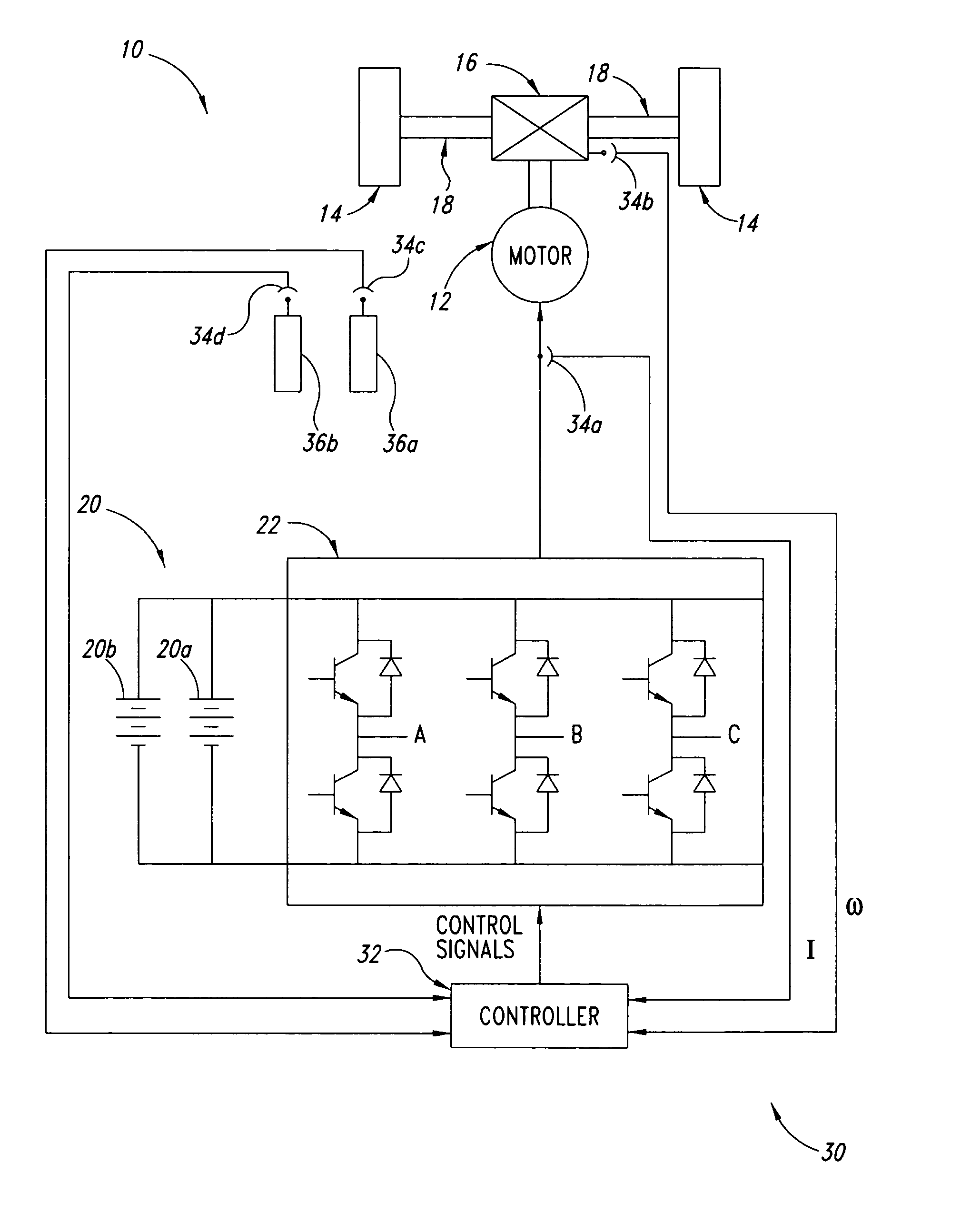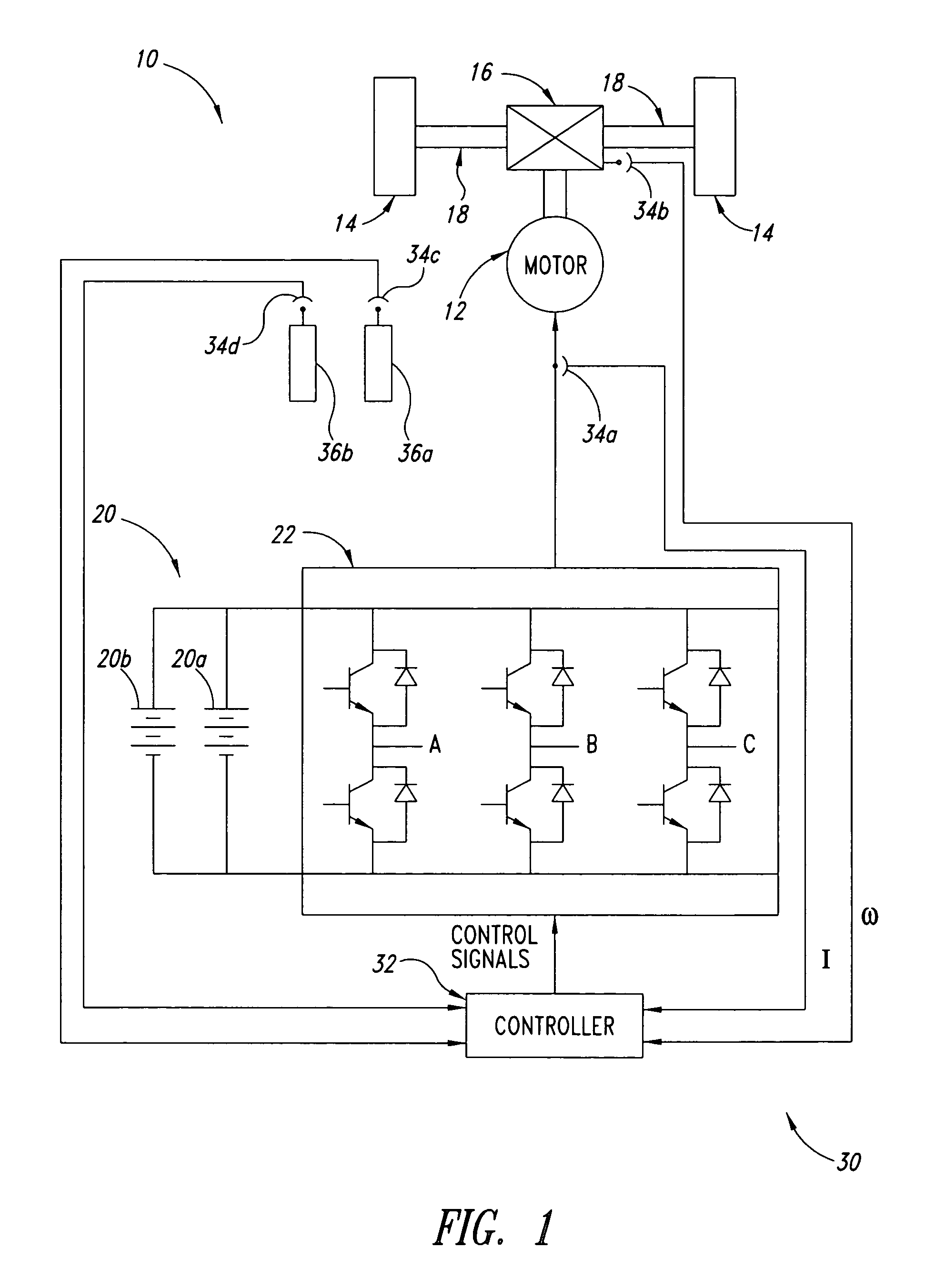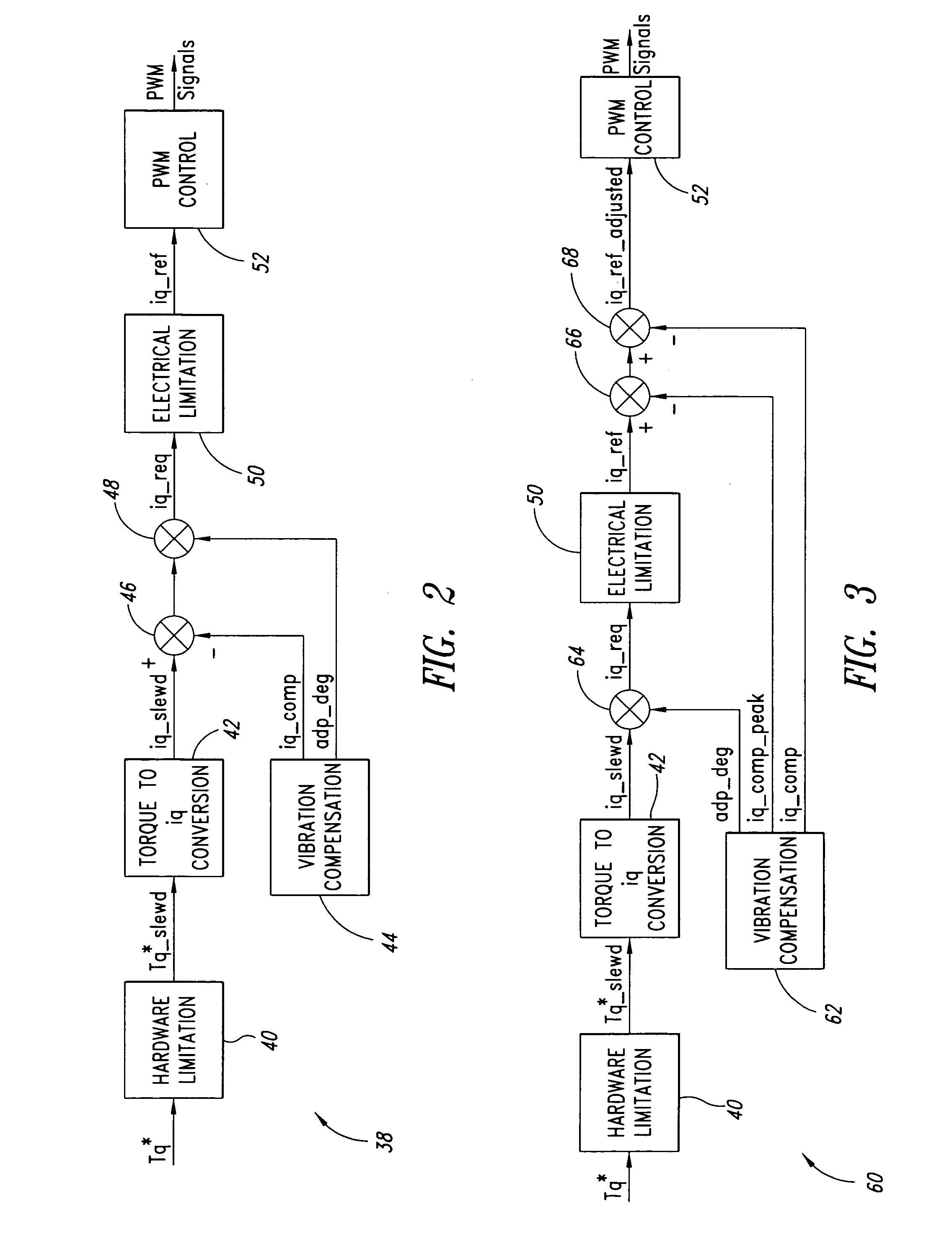Method, apparatus and article for vibration compensation in electric drivetrains
- Summary
- Abstract
- Description
- Claims
- Application Information
AI Technical Summary
Benefits of technology
Problems solved by technology
Method used
Image
Examples
first embodiment
[0055] In a first embodiment, the peak detection function is performed as part of the vibration compensation function 62 according to the following algorithm:
if |iq—comp(n)|>peak(n−1) then
peak(n)=|iq—comp(n)|
else
peak(n)=peak(n−1)−K*peak(n−1), [0056] where n is an integer value representing successive samples; and where K is a constant with the property 0
[0057] Thus, in the first embodiment the peak detection function sets the present peak value equal to the absolute value of the present torque current compensation value iq—comp where the absolute value of the present torque current compensation value iq—comp is greater than the previous peak value. Otherwise the peak detection function sets the present peak value equal to the previous peak value minus a percentage of the previous peak value, where the percentage is defined by the constant K. The constant K sets the slope of the function.
second embodiment
[0058] Since the absolute value of the torque current compensation value iq—comp is used in the above approach, there is a decrease in the torque current reference iq—ref if there is a big negative peak in the torque current compensation value iq—comp, whereas there is no impact with respect to battery limitation. In at least some embodiments, it may be desirable to have the peak detection function work for both for a positive peak if the torque current reference iq—ref is a positive value, and for a negative peak if the torque current reference iq—ref is negative value. the peak detection function achieves this by calculating separate values, maximum torque current compensation value iq—comp—max and minimum torque current compensation value iq—comp—min for positive and negative compensation, respectively, where the torque current reference iq—ref is given by equation 1, below.
iq—ref=iq—battery—limited−[(iq—ref>0)*iq—comp—max+(iq—refiq—comp—min]+iq—comp Equation 1
[0059] The second...
PUM
 Login to View More
Login to View More Abstract
Description
Claims
Application Information
 Login to View More
Login to View More - R&D
- Intellectual Property
- Life Sciences
- Materials
- Tech Scout
- Unparalleled Data Quality
- Higher Quality Content
- 60% Fewer Hallucinations
Browse by: Latest US Patents, China's latest patents, Technical Efficacy Thesaurus, Application Domain, Technology Topic, Popular Technical Reports.
© 2025 PatSnap. All rights reserved.Legal|Privacy policy|Modern Slavery Act Transparency Statement|Sitemap|About US| Contact US: help@patsnap.com



